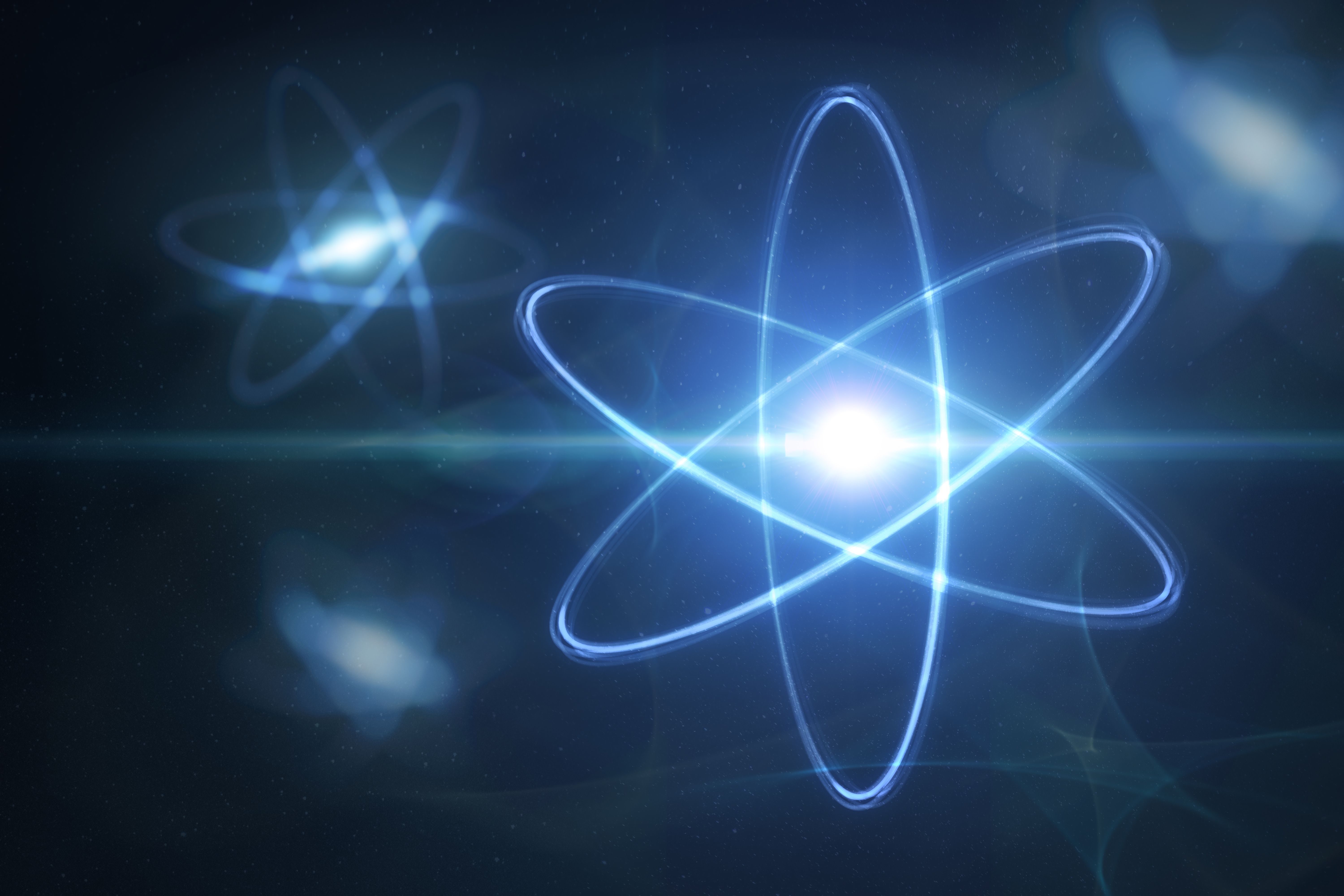DI-MS/MS Enables Accurate Quantification of Citrate Isomers and Isobars in Biological Samples
Direct-infusion tandem mass spectrometry (DI-MS/MS) enables researchers to quantify citrate isomers and isobars in biological samples with high accuracy and reliability.
A new study by Yulan Wang and Huiru Tang, published in the journal Talanta, describes a novel approach to quantify citrate isomers and isobars in biological samples with high accuracy and reliability using direct-infusion tandem mass spectrometry (DI-MS/MS) (1). The study was conducted at Nanyang Technological University in Singapore and Fudan University in Shanghai, China.
Model of atom and elementary particles. Physics concept. 3D rendered illustration. | Image Credit: © vchalup - stock.adobe.com

DI-MS/MS is an ambient ionization technique used for direct analysis of surfaces without any sample preparation. In this technique, a spray of charged droplets is generated by applying a high voltage to a liquid at the tip of a capillary. The charged droplets are directed onto the sample surface to cause desorption and ionization of the analytes. The ions are then analyzed by tandem mass spectrometry for identification and quantification of the analytes.
Citrate isomers and isobars are structural isomers with similar mass-to-charge ratios and ionization efficiencies, making their accurate quantification in biological samples a challenging task. To address this issue, the researchers developed a DI-DMS-MS/MS method to simultaneously quantify four isomers/isobars, including citrate, isocitrate, glucaro-1,4-lactone, and quinate. The method was based on a comprehensive investigation of the fragmentation pathways and characteristics of differential ion-mobility spectrometry (DMS) for the four compounds.
Differential ion mobility (DI)–differential ion-mobility spectrometry (DMS) coupled with tandem mass spectrometry (MS/MS) is a technique used for the separation and identification of complex mixtures of compounds. In DI-DMS-MS/MS, ions are separated based on their size, shape, and charge, allowing for enhanced selectivity and sensitivity in the analysis. By utilizing a high-resolution mass spectrometer, accurate mass measurements can be obtained for identification of compounds. This technique has been used in a wide range of applications, including metabolomics, proteomics, and environmental analysis.
The researchers found that all four compounds gave better MS spectra in negative-ion mode than in positive-ion mode and had numerous fragment ions under collision-induced dissociation (CID) with sequential losses of H2O and CO2. They also found that a DI-DMS-MS/MS method enabled simultaneous quantification of the four compounds with m/z 191–87 (CoV, −5.5 V), 191–73 (CoV, −3.5 V), 191–85 (CoV, −29.5 V), and m/z 191–93 (CoV, −41.5 V) for citrate, isocitrate, glucaro-1,4-lactone, and quinate, respectively. The method demonstrated a low limit of quantification below 5.5 nM, and accuracy was above 94% for all compounds.
The researchers further quantified the urinary concentrations of these compounds in human and C57BL/6 mouse samples and found clear inter-individual and inter-species level differences. Specifically, they found significantly higher levels of isocitrate, glucaro-1,4-lactone, and quinate in human urine samples than in mouse ones.
The new approach provides an effective method for understanding the detailed fragmentation pathways for organic isomers/isobars and a high-throughput MS strategy to quantify them in complex mixtures for metabolomics, lipidomics, foodomics, and exposomics, especially when chromatographic separations are not useable.
In conclusion, the DI-DMS-MS/MS method demonstrated in this study provides a reliable and accurate approach to quantify citrate isomers and isobars in biological samples, which has potential applications in various fields such as clinical diagnostics, personalized medicine, and environmental monitoring.
Reference
(1) Hu, Q.; Sun, Y; Mu, X; Wang, Y.; Tang, H. Reliable quantification of citrate isomers and isobars with direct-infusion tandem mass spectrometry. Talanta 2023, 259, 124477 DOI: https://doi.org/10.1016/j.talanta.2023.124477
Silvia Radenkovic on Her Research and Passion for Scientific Collaboration
April 3rd 2025Radenkovic is a PhD candidate at KU Leuven and a member of FeMS. Her research focuses on inborn metabolic disorders (IMD), like congenital disorders of glycosylation (CDG), omics techniques such as tracer metabolomics, and different disease models.
Analytical Challenges in Measuring Migration from Food Contact Materials
November 2nd 2015Food contact materials contain low molecular weight additives and processing aids which can migrate into foods leading to trace levels of contamination. Food safety is ensured through regulations, comprising compositional controls and migration limits, which present a significant analytical challenge to the food industry to ensure compliance and demonstrate due diligence. Of the various analytical approaches, LC-MS/MS has proved to be an essential tool in monitoring migration of target compounds into foods, and more sophisticated approaches such as LC-high resolution MS (Orbitrap) are being increasingly used for untargeted analysis to monitor non-intentionally added substances. This podcast will provide an overview to this area, illustrated with various applications showing current approaches being employed.
Advances in Non-Targeted Analysis for PFAS in Environmental Matrices
March 27th 2025David Megson from Manchester Metropolitan University in Manchester, UK, spoke to LCGC International about the latest developments in non-targeted analysis (NTA) of per- and polyfluoroalkyl substances (PFAS) in environmental matrices based on a recent systematic review paper he has collaboratively published (1).






